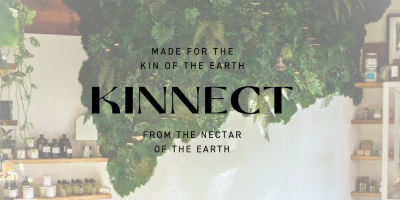I’ve recently had a lot of conversations about spring and the excitement of long evenings ahead, flowers popping out of the ground, and veggie-garden planning.
It’s gotten me thinking about all the seasons, and how I love spring because I just lived through another winter.
There's a lot to read about eating seasonally where possible to help our bodies and the health of the planet, but do we consider this when bringing flowers into our home?
When I studied art history class in England, I learned about Dutch still-life painter Jan van Huysum (1682 - 1749), known for his paintings of magnificent flower bouquets, he was admired for his attention to detail.
His floral paintings were lush and abundant with up to 30 different blooms in a vase, the shape and style of the bouquets were so different from the traditional symmetrical arrangements of his time.
What's an old Dutch painter have to do with seasons? Let me explain.
In 2014, four of Jan van Huysum’s paintings were part of an exhibition in Dulwich, UK. The exhibition was titled ‘An Impossible Bouquet' which highlighted the impossibility of these arrangements.
Known by his contemporaries as "the phoenix of all flower painters' Van Huysum's profuse bouquet paintings contained flowers from all seasons, which would have been impossible in the 18th century.

In the painting above, the flower arrangement could not have existed due to the seasons and climate of the time (1736-7). Jan van Huysum worked around the flower seasons by creating his artworks over a one to two-year period, meaning he could capture a wide range of blooms while they were in season. He even wrote a letter to a client explaining that her painting would be delayed a year because, unable to get his hands on a real yellow rose, he simply couldn’t finish the piece.
Many of his floral artworks have two dates written on them to show the years he worked on them.
Flash forward to 2021, creating an “impossible bouquet” similar to those in Jan van Huysum’s paintings is very much possible. Thanks to airplanes, greenhouses, and chemicals, we can have almost any bloom, any time of the year.
Flowers travel internationally every week of the year to meet the demands of flower lovers planning their dream winter weddings, Valentine’s Day bouquets, and “just because” bouquets.
Perhaps having almost unlimited access to out-of-season flowers is disconnecting us from nature and we’re forgetting how to enjoy flowers in their appropriate season.
Maybe the impossible bouquet should have stayed impossible.
Here are a few ways we can bring botanicals into our home without messing with the seasons.
Support Local Ask your local florist which flowers are in season and grown locally. If your florist doesn’t have a wide range of local options, they might be encouraged to buy from local growers in the future if they know there's a market for it. By supporting local florists and farms, your blooms will have a much smaller carbon footprint and you’ll be helping your local economy. Many CSA programs have an option to include flowers… why not treat yourself when you’re buying your veggies!
Ask questions Many flower growers on Vancouver Island do not use insecticides, fungicides, or herbicides, producing virtually no chemical runoff into the environment meaning the flowers are safe for bees, farmworkers, florists, and you. Make sure you feel good about sniffing your roses.

Dry your flowers When flowers are plentiful in the summer months, take time to dry some of your favourite blooms. You’ll then be able to enjoy flowers throughout the winter months. Loosely bunch your flowers with twine and hang them upside down in a spot that's dry, away from direct sunlight. Check on them a few weeks later and put them in a vase without water once they’re completely dry.
Peonies, strawflowers, stock, marigolds, and yarrow are a few of my favourites to dry. Experiment and see what works!
Sow some seeds and save some seeds Whether you have a giant garden or a sunny windowsill, there’s nothing more lovely than providing a habitat for pollinators and watching the bees enjoy your flowers. You’ll be so happy to see your homegrown beauties in a vase and if you dry them you’ll enjoy them for months and months!
When cutting your flowers don’t forget to leave some of the blooms in your garden to go to seed so you can seed-save for the following Spring.
Keep your seeds safe in labeled paper envelopes, and take them to your local seed swap in the Spring or gift your little seed packets to friends.
Forage for florals You'll be amazed at what you can find to fill a vase, even if you don’t have a flower garden. Go out for a walk and take your clippers!
Floral designer Amy Merrick talks in her book about foraging. She mixes locally grown flowers with foraged finds such as rose hips and grasses.
She says “Choosing to see natural beauty everywhere is so much of the art, and I find it empowering that all of these things are right in front of our eyes if we just start to look,”
Become a plant parent Why not fill your home with interesting plants? In the spring you could plant flowering bulbs and make a stunning living centerpiece for your table or switch it up with a mixed fern planter or hanging air plants.
Let’s celebrate daffodils, tulips, and ranunculus in spring; delphinium, roses, and sweet pea in the summer. Save the sunflowers and zinnia for autumn and follow with evergreens and rosehips in winter, waiting patiently for Spring flowers again.
Such fleeting beauty deserves our full attention.

Written by Lizz Miles.





